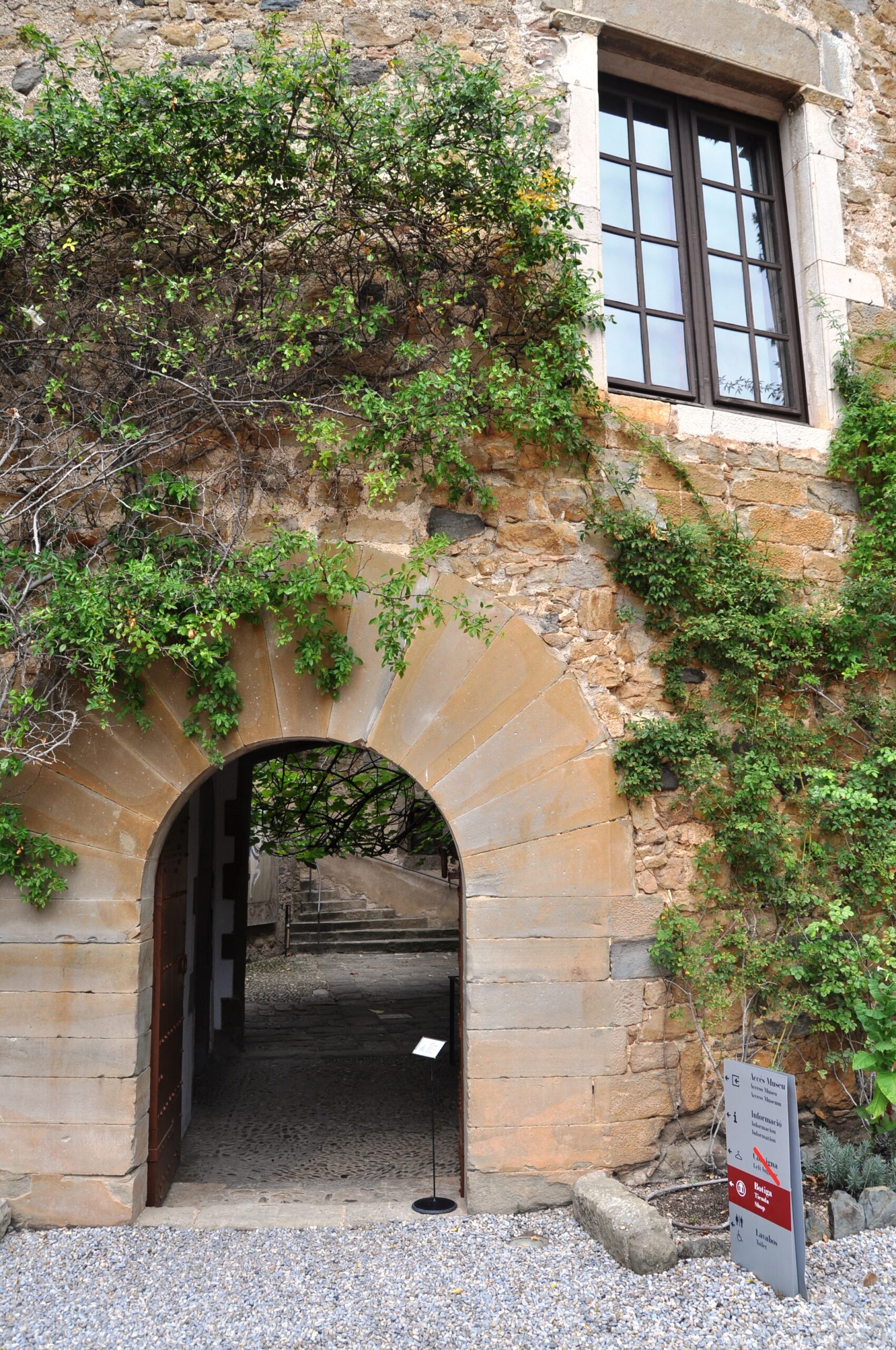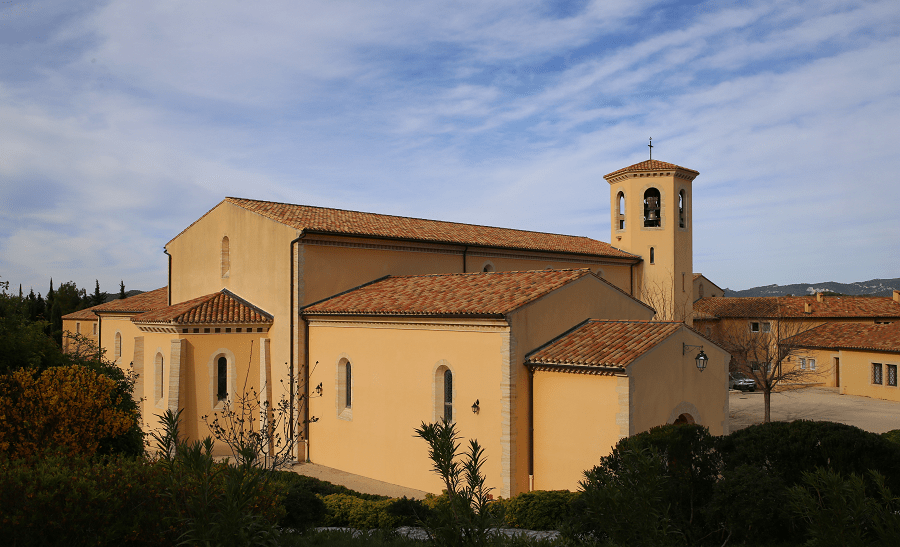“I give you a gift of a Gothic castle, Gala.
I accept, with one condition — that you only come to visit me at the Castle at my invitation.
I accept, since I accept anything in principle, on the condition that there are conditions. That is the very principle of courtly love.”
Elena Ivanovna Diakonova, Gala (1894-1982), executed the deed of purchase of Púbol Castle in Catalonia, Spain, on 1 June 1970. Two years earlier, Salvador Dalí had decided to keep the promise he had made to Gala back around the 1930s, to give her a castle as a present. In 1968, as the works on construction of the Theatre-Museum in Figueres gathered pace, Dalí charged his assistants with finding him a castle not very far from his residence in Portlligat. When they showed him Púbol, near the city of Girona and the Els Àngels Church, where Gala and Dalí had married in 1958, he did not hesitate for a second.
That gift would be Gala’s refuge, to which Dalí — as he himself used to say — could only enter strictly on invitation.
 By 1969 the castle had reached an advanced state of deterioration; the garden had been neglected and was overrun with a vegetation that dominated everything, creating a romantic atmosphere that entranced the Dalí couple and which they tried to preserve in the restoration.
By 1969 the castle had reached an advanced state of deterioration; the garden had been neglected and was overrun with a vegetation that dominated everything, creating a romantic atmosphere that entranced the Dalí couple and which they tried to preserve in the restoration.
The spaces left after the knocking down of ceilings and floors were used very intelligently, creating rooms of considerable height that contrasted with more enclosed spaces, consolidating the ruin and resolving the structural problems without concealing the scars left by the passage of time.
An effort was made to create a secret, enclosed, mysterious, private place, with spaces of great beauty. Dalí and Gala acted with new resources: enhancing the exuberance of the plant life, putting pictorial representations on walls and ceilings, exalting a certain textile baroquism in curtains, sofas and beds.
 Salvador Dalí involved himself in the decoration work, both in the garden and in some rooms at the castle, as shown by the preparatory drawings that have been kept.
Salvador Dalí involved himself in the decoration work, both in the garden and in some rooms at the castle, as shown by the preparatory drawings that have been kept.
He designed two chimneys, had the “G” for Gala placed over doorways to denote the place’s ownership, while he personally painted some works for the castle: a large oil painting entitled The Way to Púbol (1971-73), the ceiling panel of the Shields Room, a false door and two false radiators, a figure of Gala on metal and some other small paintings distributed all over the house.
 The canvas that adorns the ceiling of the Shields Room was made at the same time as the ceiling in the Wind Palace at the Theatre-Museum in Figueres, while the central part repeats practically the same themes. It gave me pleasure to decorate the ceilings so that when Gala raised her eyes, she would see me always in her heaven, was how Dalí explained the matter.
The canvas that adorns the ceiling of the Shields Room was made at the same time as the ceiling in the Wind Palace at the Theatre-Museum in Figueres, while the central part repeats practically the same themes. It gave me pleasure to decorate the ceilings so that when Gala raised her eyes, she would see me always in her heaven, was how Dalí explained the matter.
 The attic of the castle is the part of the building that was most extensively transformed during the latest restoration work. It currently houses a permanent exhibition of Gala’s wardrobe, Gala’s Galas, including items ranging from dresses by Christian Dior and Pierre Cardin to clothes designed by Salvador Dalí himself.
The attic of the castle is the part of the building that was most extensively transformed during the latest restoration work. It currently houses a permanent exhibition of Gala’s wardrobe, Gala’s Galas, including items ranging from dresses by Christian Dior and Pierre Cardin to clothes designed by Salvador Dalí himself.
The rest of the castle — except for a part on the ground floor set up for House-Museum reception and shop functions — has been left as it was during the years Gala and Salvador Dalí lived there.
Gala died in Portlligat on 10 June 1982, at the age of 88 years. Her last journey, in the Cadillac that remains today in the garage of the castle, was to Púbol to be buried in the room known as the Tithe Room.
Once Gala had died, Dalí did not want to leave her alone in the crypt and so moved into the castle himself, where he followed practically the same regime of solitude and withdrawal as she herself had practised. It was during this period at Púbol that the painter created his last works.
Dalí lived at the castle between June 1982 and August 1984, when he had to be hospitalised due to burns suffered from an accidental fire that broke out in his bedroom. He then moved to Torre Galatea in Figueres, where he lived till his death in 1989.
The Gala-Dalí Castle in Púbol was opened to the public in 1996 and is at present used for small-format temporary exhibitions that result from the investigative work carried out at the Centre for Dalinian Studies, which work is of high academic content and allows many aspects of this multi-faceted artist to be discovered.
This museum space received 83,902 visitors in 2019.
Photo: Irina Rybalchenko






















